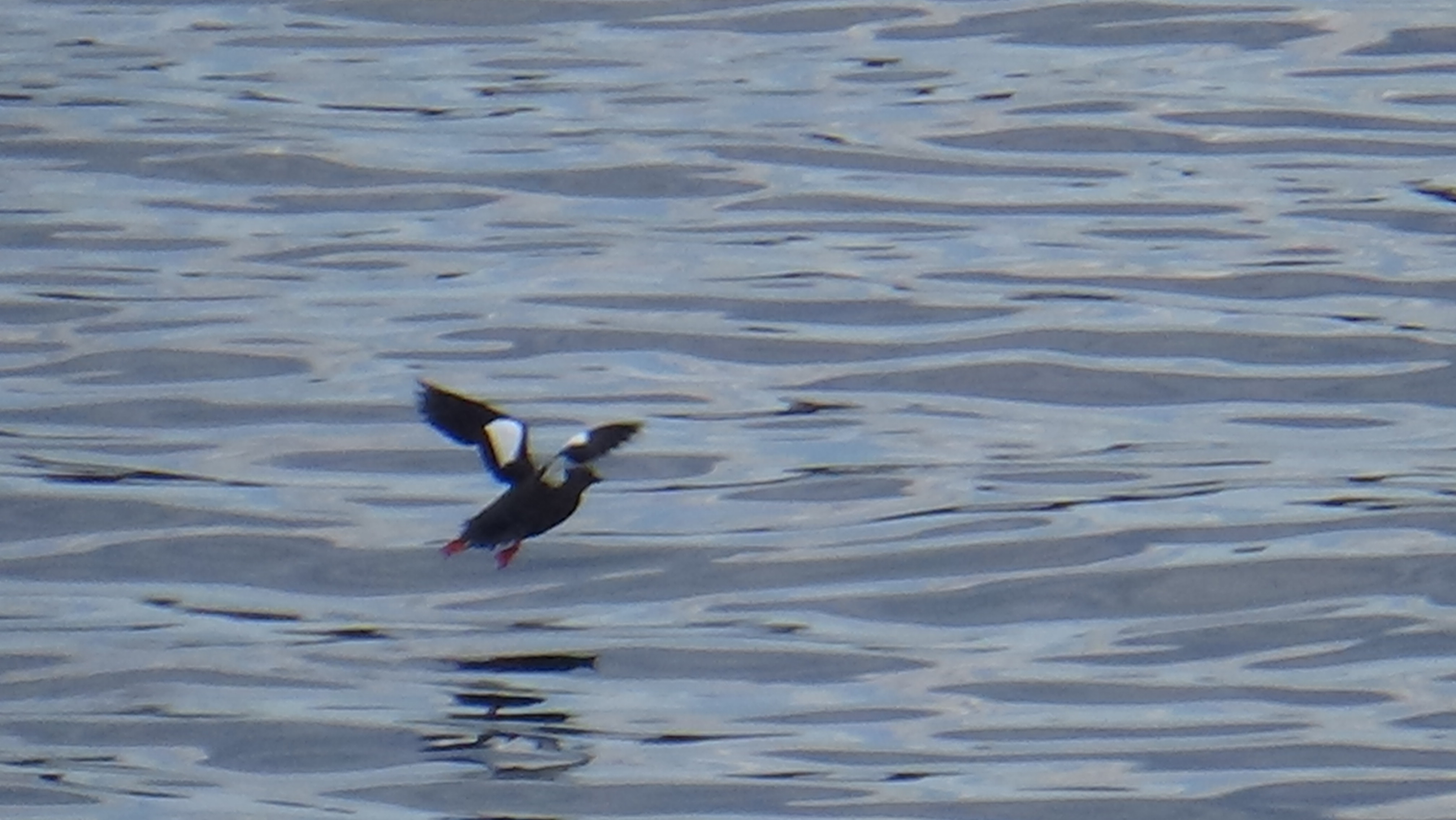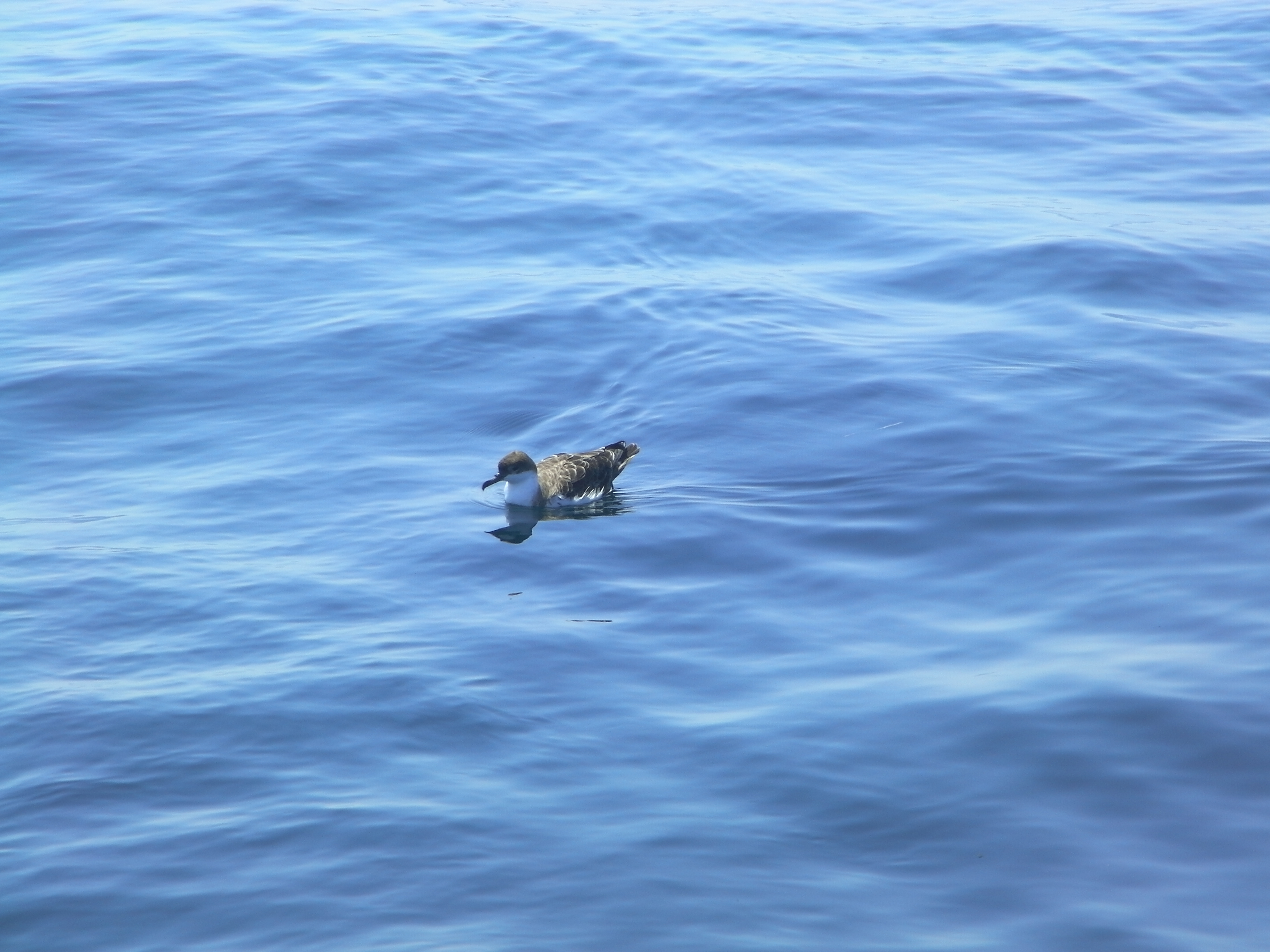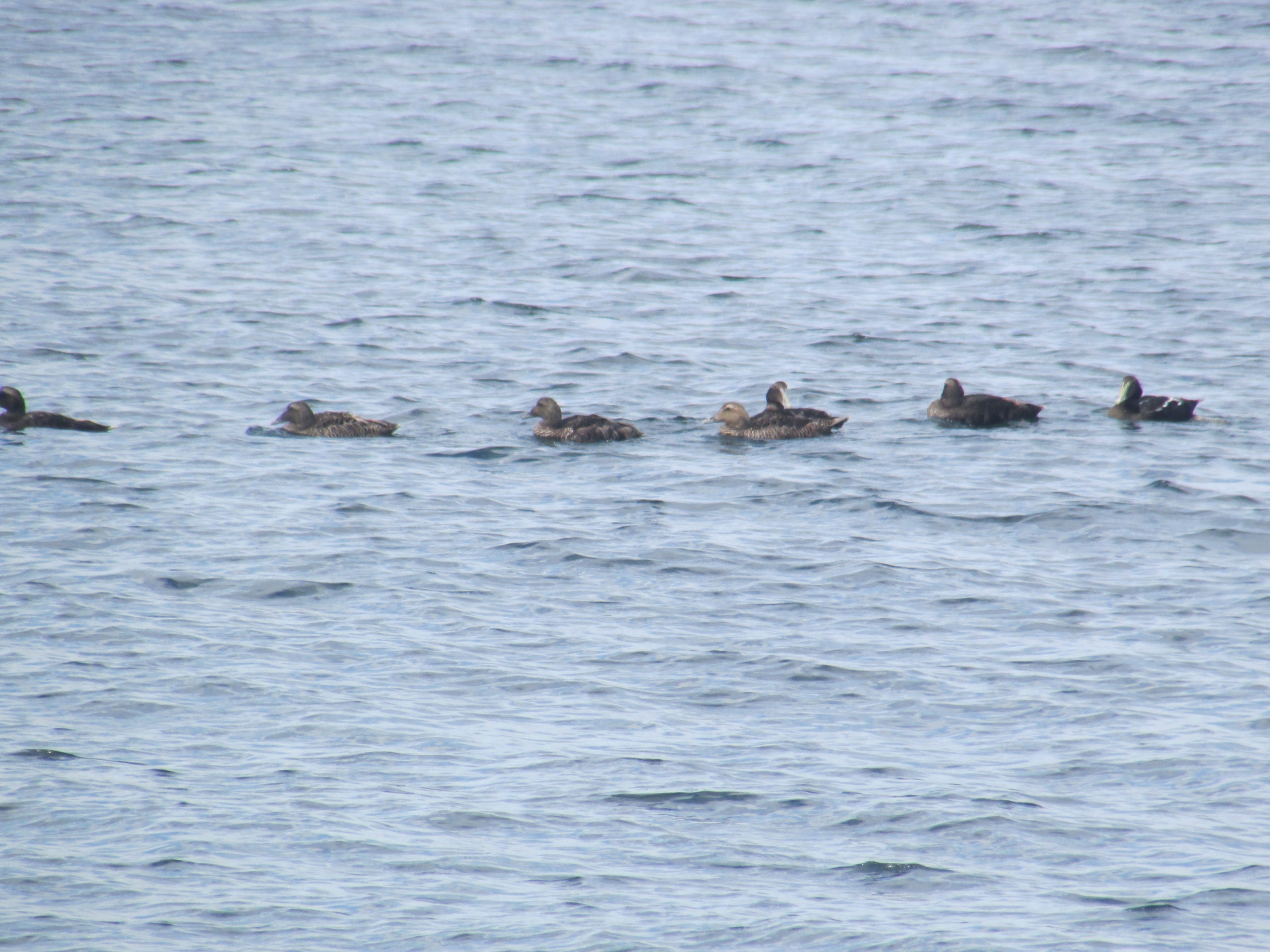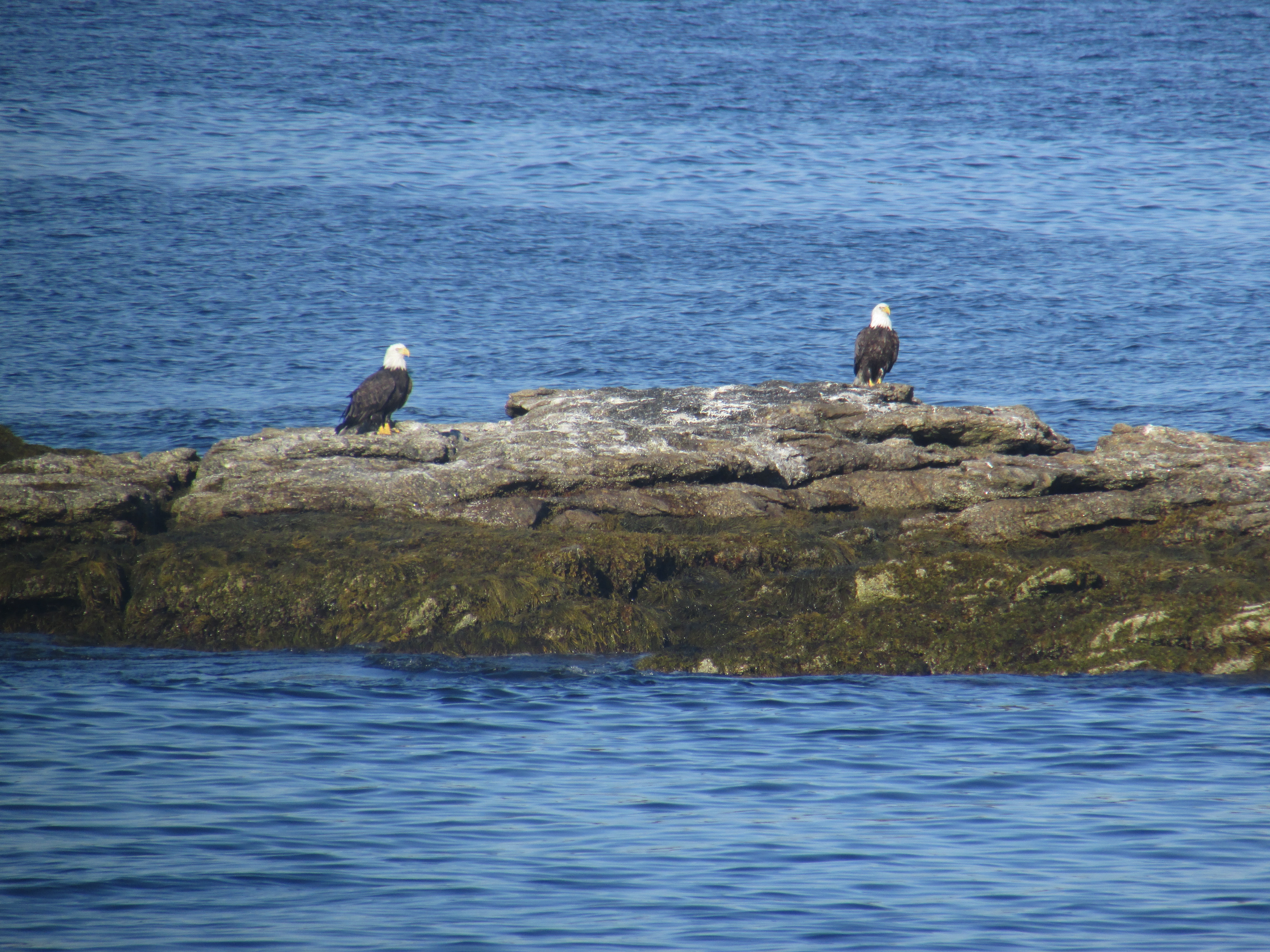SEABIRDS
On your Maine “Sea-Fari”, you will experience the raw beauty of the Maine coastline and interact with various incredible wildlife. Regardless of which cruise you go on, you are likely to encounter birdlife. Below are some of the seabirds that you may see and learn about while enjoying a Cap’n Fish Cruise. How many do you think you can spot?
Alcids/Auks (Family Alcidae)
Alcids are seabirds who use their wings to both fly and swim! They come to land to breed in large or small colonies and spend the rest of their lives on the open ocean.

The Atlantic Puffin has served as ambassadors of this group with their recovery and becoming an icon in Maine. Their colorful beak, visible only during breeding season, is unlike any other bird around! A small bird standing only about 10 inches high, they can be spotted on and around Eastern Egg Rock in our region. They come to breed in the spring and stay through mid-August.
The Black Guillemot is only black in the summer changing to a frosty white in the winter. They are fun to watch paddling along their bright orange feet; often spotted in harbors or around rocky shores, yet cover a board range of territory.
The Razorbill and Common Murre wear different black and white tuxedos and are even better adapted to swimming then puffins! Getting a glimpse of these other alcids is always a special treat!
Tubenoses (Order Procellariiformes)
Tubenoses are a group defined by having nostrils enclosed in tubes on their bill that allow them to drink sea water and excrete the salt out through the tubes! Many species are found throughout the world’s oceans and rarely come close to shore.

The Great Shearwater is a brown bird with a white underbelly and neck with a dark cap on their head. Often seen sitting together in large groups on the surface of the open ocean. When they take-off, they explain their name; soaring in a low-gliding motion just above the tops of waves, almost touching with the tips of their wings, “shear the water” as they fly. Sometimes a Sooty Shearwater (solid darker brown), Cory’s Shearwater (larger with yellow bill), or rarely a Manx Shearwater (smaller with no pointed tail feathers), is spotted among the crowd.
The Northern Fulmar will share the same flight pattern as shearwaters but look similar to a gull when they are in their light morph.
Storm Petrel’s can be abundant by the thousands in the right time of summer. The Wilson’s Storm Petrel is a small black bird with a white rump. They are often seen following ships and whales, picking up small crustaceans off the surface of the water. Other storm petrels including the Leach’s Storm Petrel, can be difficult to distinguish from one another.
Gulls and Terns (Family Laridae)
This is a broad family of many species with different seasonal morphs. All species are closely associated with water. Too many to list, but that doesn’t mean they won’t be spotted!

The “seagull” most frequently found bugging you on the beach would be the Herring Gull. Herring gulls are scavengers who have taken advantage of feeding on human garbage to dramatically increase their population. They have a gray back and wings with a white body and head, pink legs and a yellow beak with a red spot on it. They will likely scatter when the largest gull in the world swoops in, the Great Black-Backed Gull.
The Laughing Gull is usually not mistaken with it iconic “laughing” call and black hooded-head and red bill. The Bonaparte’s Gull is another hooded-gull to be on the lookout for in the fall, identified by its red legs and small black bill, but it will be losing it's hood at this time and instead be replaced by black "ear muffs."
Despite the term “seagull,” most gulls are coastal birds with the Sabine’s Gull, and Black-legged Kittiwake being two that are truly pelagic, a rare find with best chances in the fall.
The Common Tern, is logically, the most common tern to see. With sharply angled wings, a black cap on their head, and a red bill tipped with black, they are distinguished from the Arctic Tern who sports an all red bill, and the rarer endangered Roseate Tern who has a black bill.
Cormorants and Gannets (Order Suliformes)
Suliformes, originally grouped with Pelecaniformes whom all share the common characteristic of webbing between all four toes. They tend to be medium to large sized birds.

It’s hard to miss the Double-crested Cormorant, a large black bird with yellow-orange colored skin on their face; often seen in groups or swimming solo. If one pops out of the water with a big lump in its long neck, it likely just caught a big fish or even a lobster! The next task will be to stand on a rock in the sun with wide opened wings to dry out those feathers! A very rare summer sighting could include the larger Great Cormorant with slightly lighter colored plumage and white on its thigh.
The bright white plumage of the Northern Gannet makes them hard to miss as well. The outer half of their wings is black and there is a yellow hue on the top of their head. They are the largest pelagic bird in our region with a 6-foot wingspan. During the summer, many immature gannets with a mottled brown/gray color are seen. Don’t mistake that unexpected splash for a whale spout, it could have been a gannet plunge diving to catch a fish!
Waterfowl (Order Anseriformes)
These birds are all highly adapted for aquatic life swimming and floating on the water’s surface. Few species are truly marine with many spending parts of the year in freshwater habitats.

Friend or foe? The migratory Canada Goose is sometimes considered a pest as hundreds flock to yards, parks, or crop lands with their noisy honks and mess of droppings. Yet, they are elegant in flight with the classic “V” formation. These intelligent birds will occasionally infiltrate the harbor or nearby regions.
The largest duck in the Gulf of Maine is the Common Eider. Males are unmistakable with their bold, contrasting white and black color, while females are a dull striped brown. As colonial breeders, they are often seen together in large flocks.
Sometimes a Mallard Duck or Wood Duck will venture into the salty water for a dip. The males of both species have colorful green on their heads. Occasionally during the fall, sightings of other species show up including the Northern Pintail or Red-Breasted Merganser. The Black Scoter is even sometimes seen flying in straight line formations during their migration.
Loons are actually Gaviiformes. Yet, they are unique birds that share many common features with waterfowl and other seabirds. Mostly found in freshwater in the summer, loons are usually only seen in marine regions during fall. The Common Loon, known for its “yodel-like” call, is a fabulous diver, but requires long runs of water to take off into flight. The Red-throated Loon is smaller with a red to rust colored patch on their neck and can even take off from land.
Raptors (Order Accipitriformes)
Raptors are birds of prey with keen eyesight, curved beaks, and strong talons used to forcibly grab their prey. They have long, broad wings for soaring flight.

An American symbol, the Bald Eagle, is quickly recognized by its white head and black body. Often observed around inner waterways and rivers, a prime habitat for hunting fish. Scan the treetops for a large nest to determine if an eagle might be nearby. Once endangered by hunting and pesticides, they have flourished under protection.
Don’t fret if you witness an eagle’s aggression towards the smaller Osprey, it’s the order of the natural world. Osprey are mostly brown with a white breast and underparts streaked with brown. They are known to build nests on man-made structures including telephone poles, channel markers, and even bridge superstructures. Exceptional anglers, osprey, have an average hunt time of about 12 minutes before making a successful catch!
